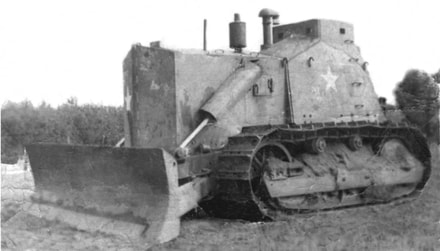Why The 20-21 School Year Is an Opportunity
Author: Ryan Smithson
{authorlink}
Go to Source
When you think of the D-Day invasion of Normandy, you probably picture amphibious landing craft, warplanes, and thousands of storming troops. What you probably don’t picture is one of the most important pieces of equipment brought to those gray beaches on that fateful day: the bulldozer.

The Allied powers knew that taking those beaches was only the beginning. Keeping them was a different story. They had to funnel in supplies, troops, weapons, and machinery — and fast. They needed to flatten German defense bunkers, create landing strips for aircraft, clear forests, fill in trenches, and build roads for new supply lines. Enter the armored dozer. Like something out of a Mad Max film, it was a beefed up, olive drab version of the Caterpillar you’d see at any construction site. And World War II wouldn’t have been the same without it.
There’s a lesson here: victory doesn’t happen in a day. Being successful is one thing, but staying successful requires organizations to continually reinvent themselves in the face of new challenges. Now more than ever, organizations around the world are feeling unprecedented change, and how they adapt (or don’t) is largely dependent on the equipment available to them.
Since COVID first began reshaping the world, I’ve been inspired by how districts are using routing software and GPS hardware to adjust to the new normal. As school districts begin planning for the many unknowns of the 20-21 school year, I wanted to highlight some of the key lessons we’ve learned as we keep our ears to the ground about the shifting needs of the K-12 routing industry:
- Bus Attendance — We’ve had formal student ridership solutions for several years, but our current situation has created the need to quickly take attendance, without much time to issue RFID cards and readers, or to re-educate students and parents about a new boarding process. Since the beginning of the pandemic, Tyler’s development team has been hard at work on Tyler Bus Attendance, just released this month, a mobile app that enables monitors and aides check in each student as they board the bus. The attendance data from each run is then accessible for administrators in Tyler’s routing software. Tracking this daily information enables a quick response in case a health concern notification needs to be sent to riders.
- Social Distancing — Tyler Bus Attendance also enables users to quickly create custom bus seating charts, especially helpful for social distancing. Multiple configurations allow you to automatically skip seats or rows, or generate a chart which loads from back to front to minimize rider contact. The goal of software isn’t just to plan for the best-case scenario. It’s to accurately track what happened each day for reporting and analysis.
- Cloud-Based Applications — As districts moved to a work-from-home model, the already-growing need for mobility skyrocketed. The flaws of server-based, licensed software became glaring and real. Those districts who subscribe to our web-based, cloud-native software, Traversa, never lost a single moment of access to their student, driver, and routing data. Twenty years ago, that wasn’t possible. Today, it’s the expectation. Since its release in 2014, Traversa brings all the benefits of cloud technology to school districts and bus contractors, including scalability, mobile access, and low IT involvement.
- Real-Time Routing — Whether it’s for drivers navigating new lunch delivery runs or for electronic inspections for bus cleaning, Tyler Drive has been helping districts and contractors respond to real time changes since 2016. Tyler Drive uses the same map and route data inside of Traversa or Versatrans Routing & Planning to help drivers with their daily tasks. Whether they go off path for construction and need instant navigation to the next stop or they’re a substitute operating in an unfamiliar neighborhood, the benefits of real-time navigation have changed expectations for school bus routing solutions and will help our clients respond to ever-changing needs as the 20-21 school year rolls along.
- Continual Improvement — Software cannot remain static. It needs to be as flexible as the transportation operations it serves. For six years now, our development staff has churned out three to four feature-rich releases each year on Traversa and Tyler Drive, while also still releasing on and supporting our flagship Versatrans suite, which continues to be a market-leading product for thousands of school districts and contractors. These releases are based almost 100% on direct user feedback, and because we build in opportunities for mid-release enhancements, our clients never stop benefiting from their suggestions. The Agile development process has uniquely positioned our team to understand and respond to the many changes school districts now face. Over 15% of our total division revenue goes toward developing and improving our software each year. That 15% is our bulldozer. It’s how we continue to remain on the cutting edge.
“Innovation is ability to see change as an opportunity, not a threat.” – Steve Jobs
I invite every transportation professional to read the quote above, and respond to the 20-21 school year with enthusiasm, empathy, and ingenuity. We’re all in this together, and Tyler is doing everything in our power to deliver innovative solutions that continue to create the standard for K-12 routing software and hardware.
If this is important to you, please watch this quick webinar about Tyler Bus Attendance, and this webinar which highlights parent communication and our other valuable mobile solutions. To schedule a customized demo for your operation, please email or call us today!
info@tylertech.com
800.433.5530
